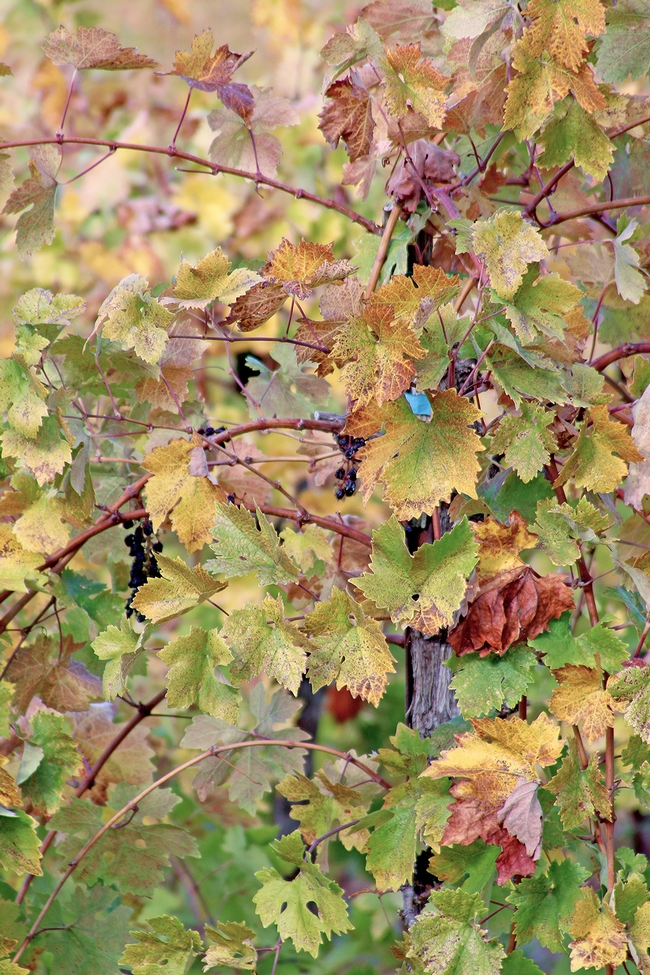
In 2008, UC Cooperative Extension specialist Jim Wolpert and staff research associate Mike Anderson identified red blotch as a disease caused by a distinct virus. Since then, it has been found in numerous California regions, as well as 11 other states, including all major U.S wine states.
As suggested by its name, the disease turns grape leaves a blotchy red color. The infected grapevines may produce clusters with reduced sugar content, causing delayed harvests. Poor color development and increased acidity are found in some clusters on diseased vines. There is no cure.
The Wine Spectator article said UC Davis and USDA Agricultural Research Service may have made a breakthrough in understanding how the disease is spread. After running experiments with various insects found in infected vineyards, they theorize that the three-cornered alfalfa treehopper is a probable vector for the disease. Greenhouse-raised, disease-free control vines were found to have contracted red blotch after exposure to treehoppers from infected vineyards.
The treehopper mostly feeds on plants near vineyards — fruit trees and grasses. It sometimes feeds on leaves, but was considered a minor pest. If the treehopper is the disease vector, farmers will have a target for treatments that could slow the spread of red blotch.
"Management strategies so far have relied exclusively on careful selection of clean planting materials from virus-tested stocks," said Marc Fuchs of the School of Integrative Plant Science at Cornell University. "So the identification of the three-cornered alfalfa treehopper as a vector is putting researchers in a position to develop more effective management strategies."